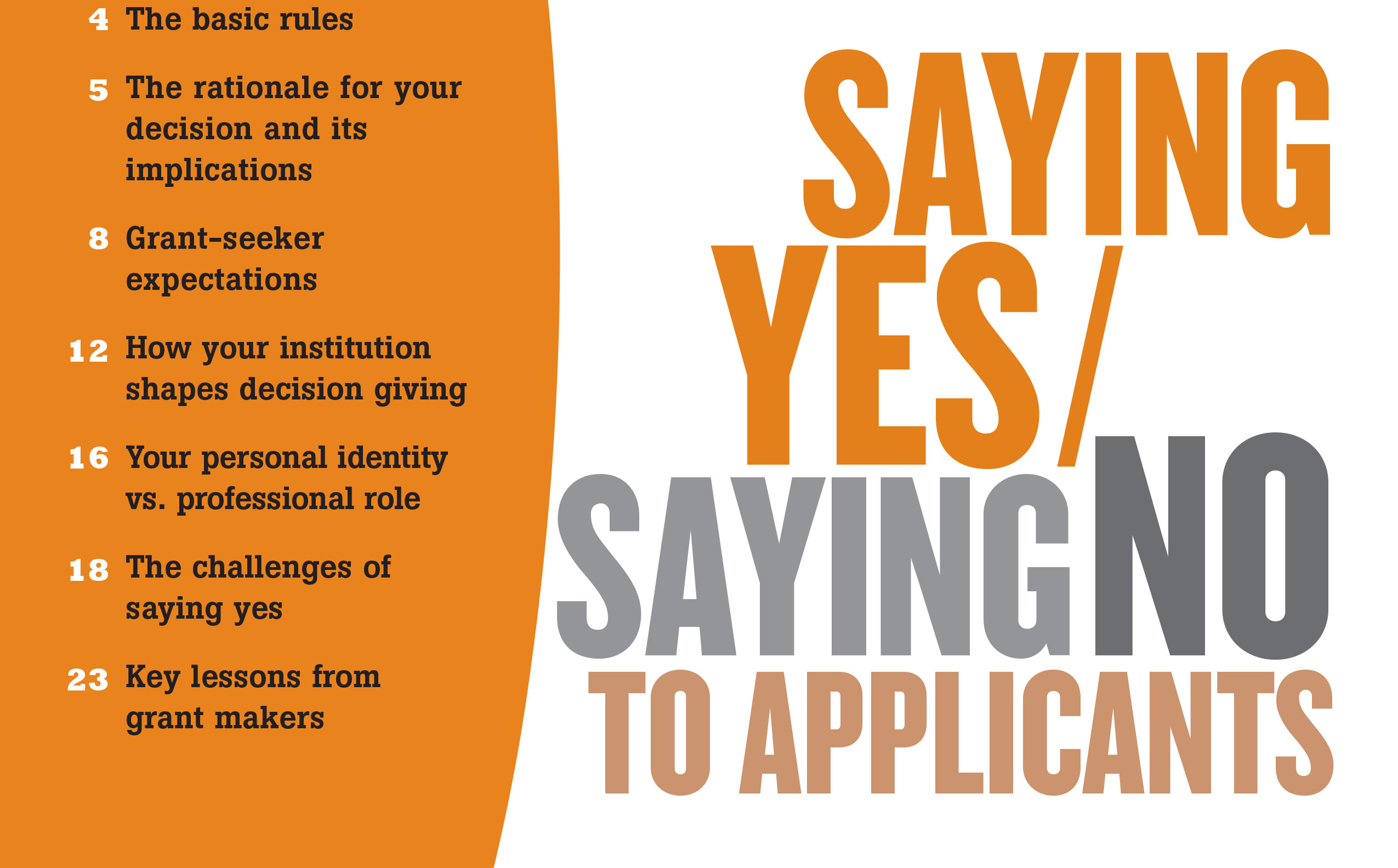Giving the Full Story Rationale Statements
In a large Western city, many applicants to the local community foundation get an enclosure along with a letter approving or declining their grant proposal. This “rationale statement” gives each grantseeker a detailed account of how and why the foundation arrived at its decision.
In a rationale statement accompanying one recent turn-down, for example, the foundation crisply reviewed its thinking. Along with worries about high per-client costs, the statement expressed concerns about a rocky leadership transition. After the departure of its first executive director, the applicant organization was being run by its founder and volunteer board (which, the foundation thought, was not meeting often enough to keep up with its temporary management role). The upshot: “We prefer not to fund until a permanent management structure is in place.”
From the same docket, another grant seeker received, along with a check, a rationale statement outlining what the foundation saw as its strengths: participation of all board members in fundraising, “sound fiscal oversight” that had created a “diverse funding base,” and thoughtful collaboration with other nonprofits that enhanced the foundation’s leverage.
The foundation gives rationale statements to about 60 percent of its grantees. Those applying to donor advised funds do not get a statement, nor do those who do not get on to the docket (generally because their proposals fall outside the foundation’s guidelines). All grantseekers who get a site visit receive rationale statements with their letter.
In part, says the foundation’s vice president for programs, the rationale statement reflects the foundation’s desire to create an open and constructive grantor-grantee relationship. “It makes grantmaking less mysterious,” she says, adding that “even when you’re getting a grant, [the process] can be mysterious.”
Beyond promoting a more open relationship, the foundation sees the rationale statement as “a form of capacity building.” After feedback pointing out some deficits, the vice president explains, the grantseeker might return with a stronger proposal the following year. Other grantees call to discuss the feedback, asking for advice about how to proceed. In some cases, the foundation will invite the grantseeker to apply to its technical assistance fund for a grant to deal with a specific weakness cited in the rationale statement.
Even when the grantseeker gets a Yes, staff members believe the rationale statements are important. In addition to providing encouragement to strong nonprofits, they help clarify the foundation’s expectations and reinforce important goals.
And grantees, in cases of both Yes and No, have reported that the rationale statements are important tools for focusing their boards on challenges they need to work on. “Especially when it comes with a check,” the program vice president remarks, “boards will sit up and listen.”
Although the statements can be a “bit of a pain to prepare,” she adds that “program officers see them as a very important tool in their work. It gives them an opportunity to give input that grantees find useful.”

